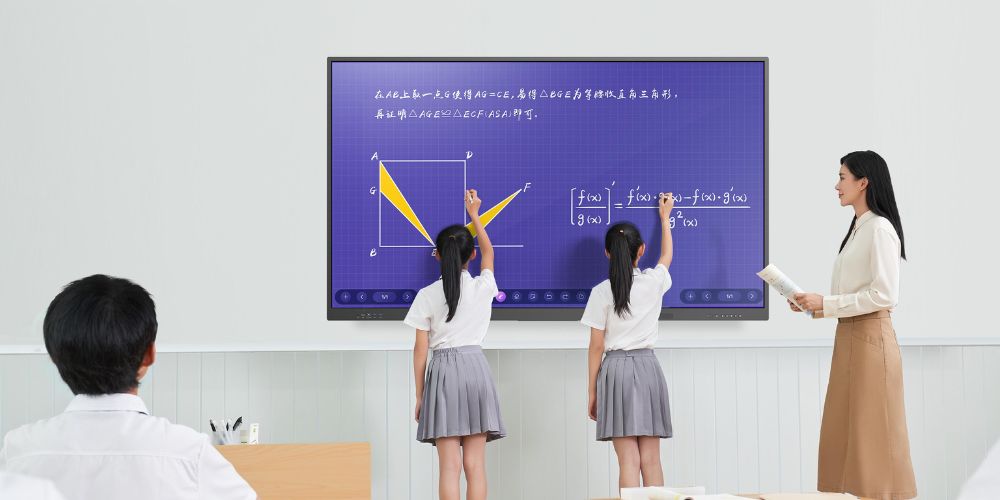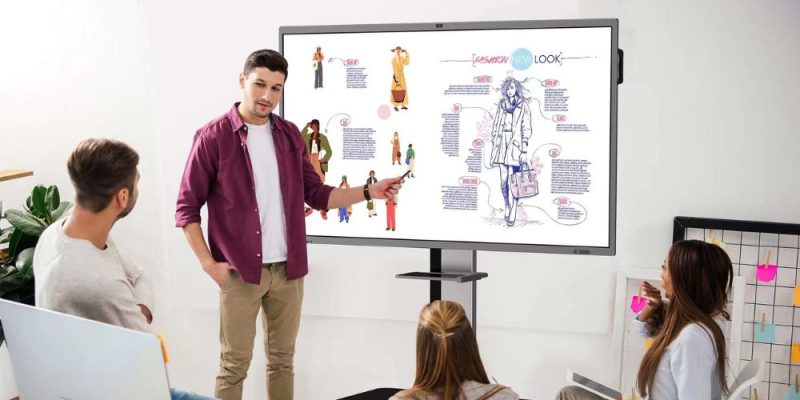Dusty chalkboards and dry-erase markers are no longer used in education technology and corporate training. The digital revolution has brought about the rise of interactive whiteboards, which have transformed static presentations into dynamic, engaging learning and collaboration experiences. These innovative tools enhance how educators and students learn and revolutionize corporate meetings and training sessions. Let’s look at how interactive whiteboards change how people engage and communicate in the classroom and at work.
#1 Revolutionizing Classroom Engagement
Interactive whiteboards are proving to be a powerhouse in education technology, bringing lessons to life in ways that traditional blackboards could never do. Interactive whiteboards allow teachers to directly incorporate multimedia resources—videos, images, and real-time annotations into their lessons. This multimedia approach caters to diverse learning styles, helping visual and auditory learners to absorb complex concepts easily. Moreover, touch recognition lets students interact directly with the material, creating a more engaging and participatory learning environment.
Adopting interactive whiteboards can lead to a noticeable improvement in student engagement and participation rates, with a subsequent increase in overall academic performance.
#2 Enhancing Corporate Meetings and Training
In the corporate sector, interactive whiteboards streamline and energize meetings and training sessions. They facilitate real-time collaboration, allowing teams to instantly brainstorm, edit, and display ideas. This capability is extremely useful for encouraging teamwork and ensuring all voices are heard, especially in hybrid and remote settings where participants may be geographically dispersed.
Interactive whiteboards also make it easier to save and share the outcomes of meetings, ensuring that no idea gets lost and everyone remains on the same page post-discussion. During a strategic planning session, an interactive whiteboard can be used to map out project timelines and assign tasks. The session’s efficiency was increased, as team members could immediately visualize responsibilities and timelines.
#3 Bridging the Gap Between Traditional and Digital
The transition from traditional to digital can be daunting for both educational institutions and corporations. Interactive whiteboards act as a bridge, offering an intuitive user interface that feels familiar yet provides the digital functionality necessary in today’s education technology-driven world. This ease of use ensures that individuals, regardless of their tech-savvy level, can adopt and effectively use interactive whiteboards.
#4 Statistical Evidence of Effectiveness
Research indicates that schools implementing interactive whiteboards observe a 16% rise in student engagement and a 12% improvement in retention rates. Similarly, companies report a 25% increase in meeting productivity when using interactive whiteboards compared to traditional presentation methods.
#5 Best Practices for Implementing Interactive Whiteboards
Successfully integrating interactive whiteboards into educational and corporate environments involves more than just purchasing the hardware. Here are some best practices:
- Training and Support: Ensure all users receive proper training and ongoing support is available.
- Content Adaptation: Adapt existing content to fully use interactive whiteboard capabilities, ensuring interactive materials are suitable for digital manipulation.
- Feedback Mechanisms: Regularly collect feedback from users to improve the usage and functionality of the technology.
Wrapping Up
Interactive whiteboards are more than just technological advancements; they are transformative tools that adapt to and enhance our ways of learning and collaborating. Whether in classrooms or corporate boardrooms, interactive whiteboards promise to drive engagement, boost productivity, and facilitate a more inclusive and interactive environment. As we continue to embrace digital transformation, the role of interactive whiteboards will only grow, proving indispensable in our journey toward more effective education and efficient corporate communication.
Interactive whiteboards are not just the future; they are the present, actively shaping how we interact, learn, and achieve in collective environments. Here is to a more interactive future. The board is set; it’s time to make your mark!









